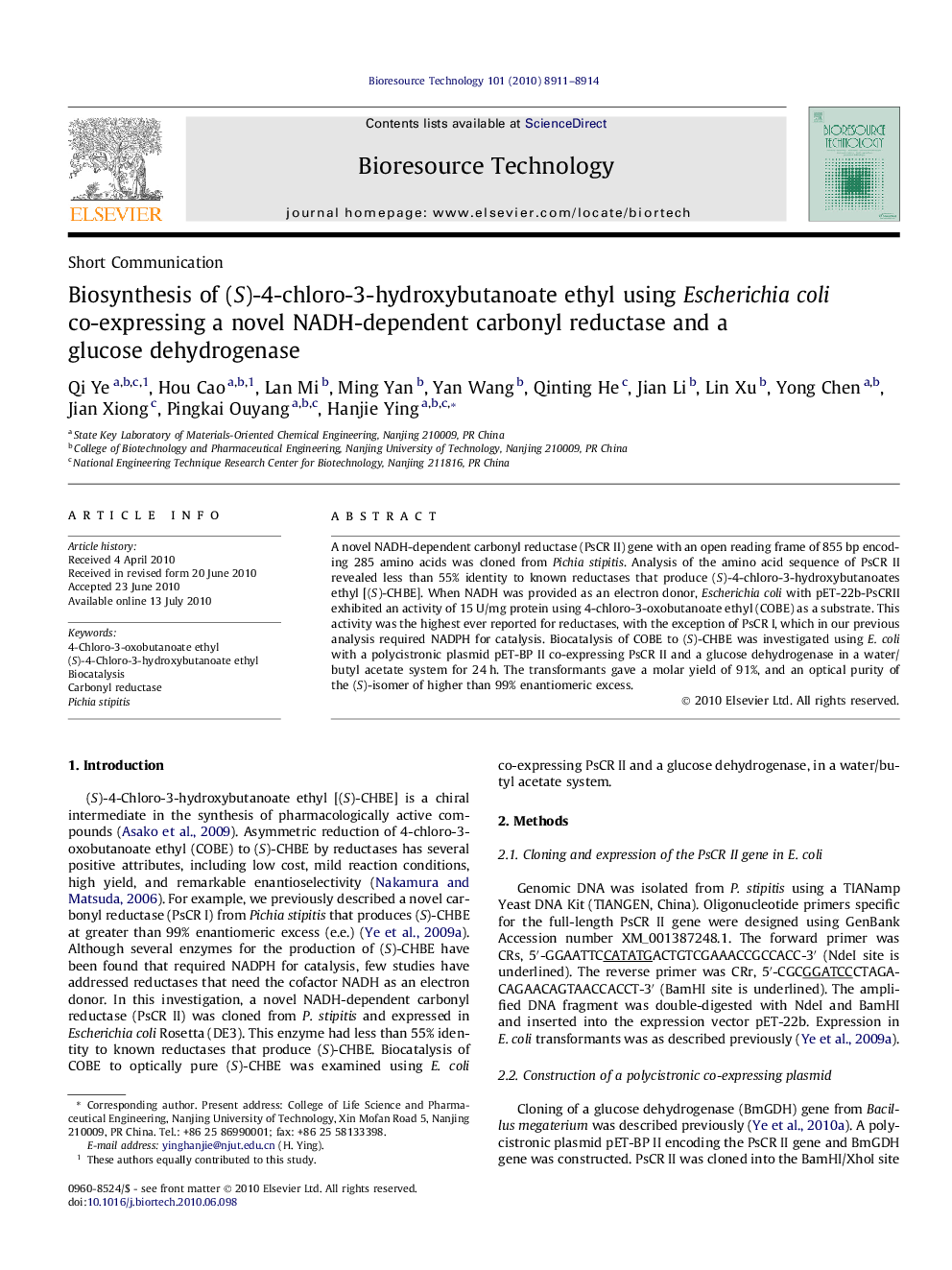| Article ID | Journal | Published Year | Pages | File Type |
|---|---|---|---|---|
| 682721 | Bioresource Technology | 2010 | 4 Pages |
A novel NADH-dependent carbonyl reductase (PsCR II) gene with an open reading frame of 855 bp encoding 285 amino acids was cloned from Pichia stipitis. Analysis of the amino acid sequence of PsCR II revealed less than 55% identity to known reductases that produce (S)-4-chloro-3-hydroxybutanoates ethyl [(S)-CHBE]. When NADH was provided as an electron donor, Escherichia coli with pET-22b-PsCRII exhibited an activity of 15 U/mg protein using 4-chloro-3-oxobutanoate ethyl (COBE) as a substrate. This activity was the highest ever reported for reductases, with the exception of PsCR I, which in our previous analysis required NADPH for catalysis. Biocatalysis of COBE to (S)-CHBE was investigated using E. coli with a polycistronic plasmid pET-BP II co-expressing PsCR II and a glucose dehydrogenase in a water/butyl acetate system for 24 h. The transformants gave a molar yield of 91%, and an optical purity of the (S)-isomer of higher than 99% enantiomeric excess.
